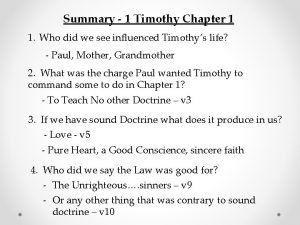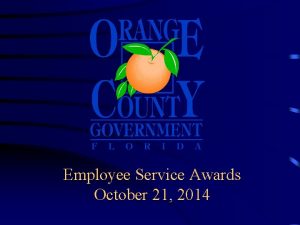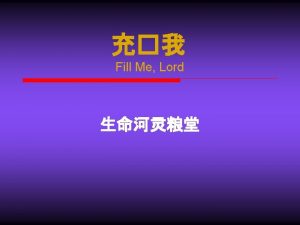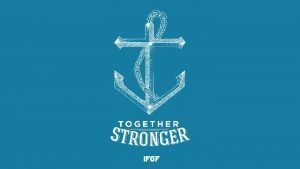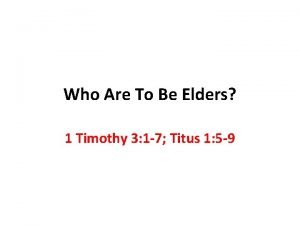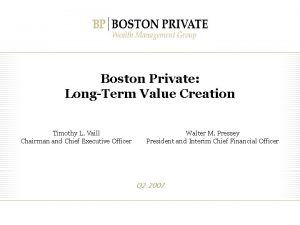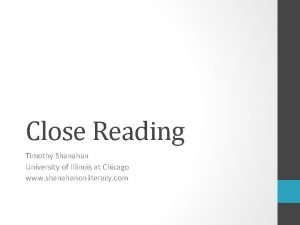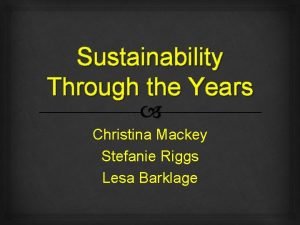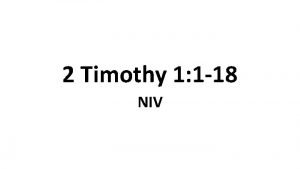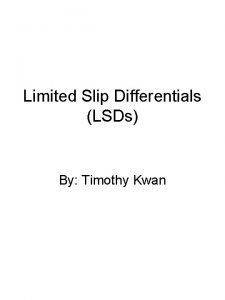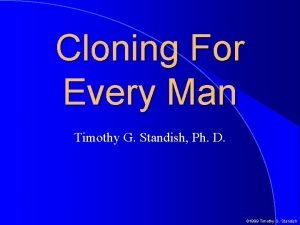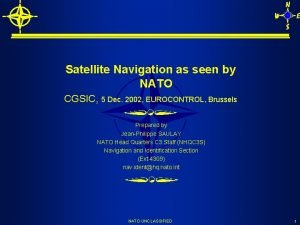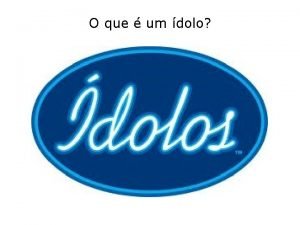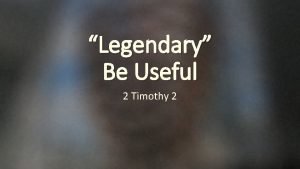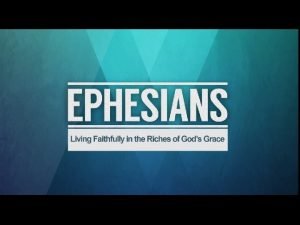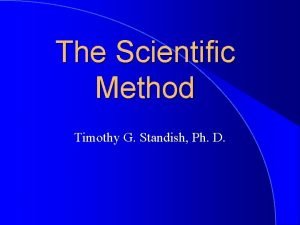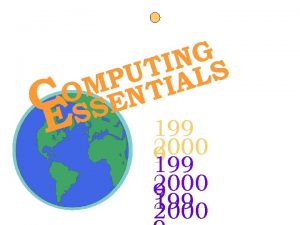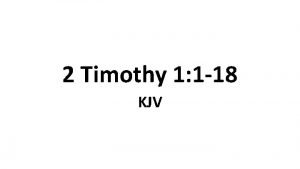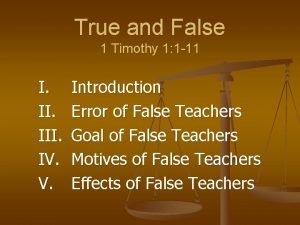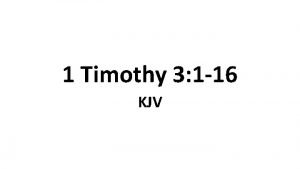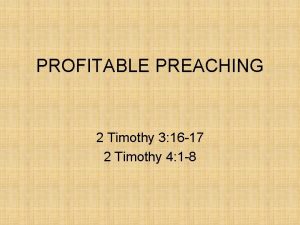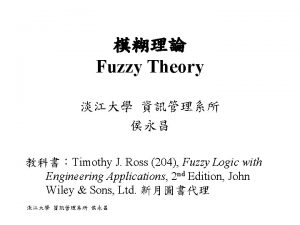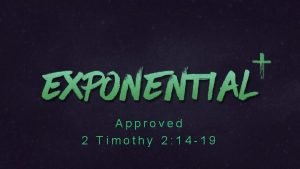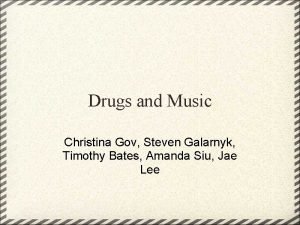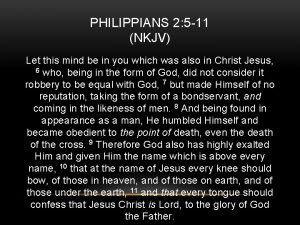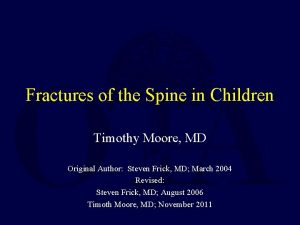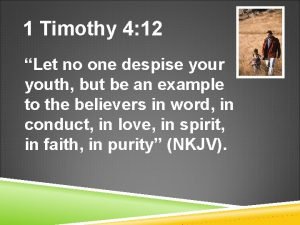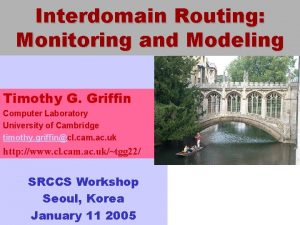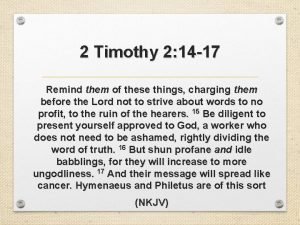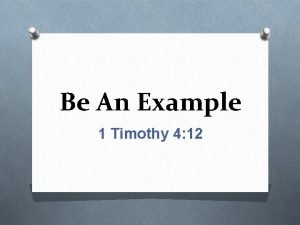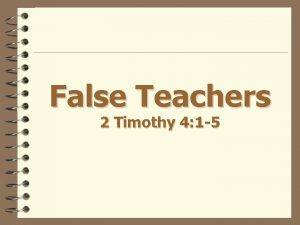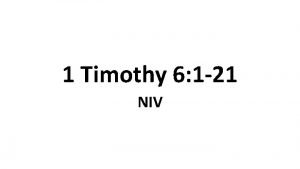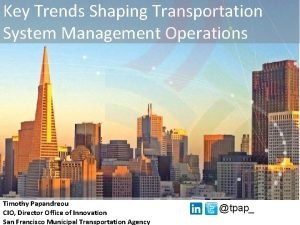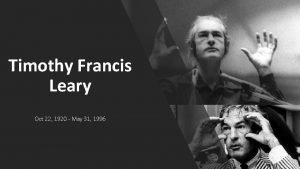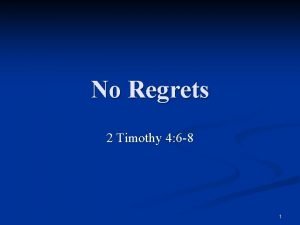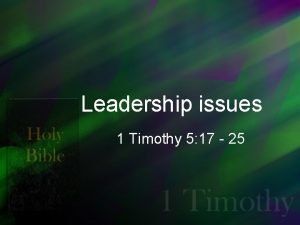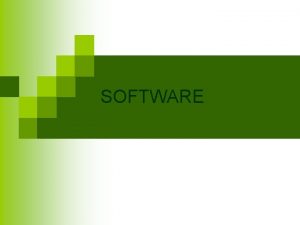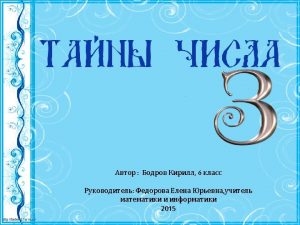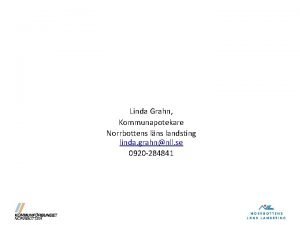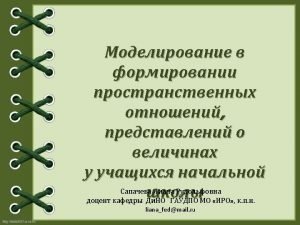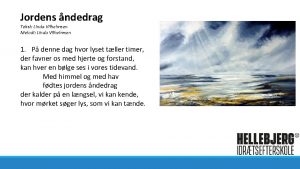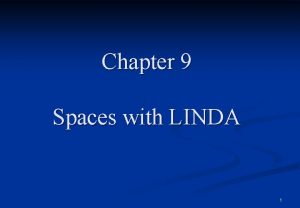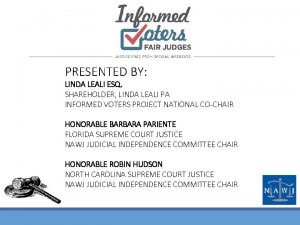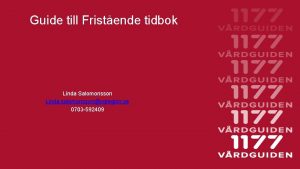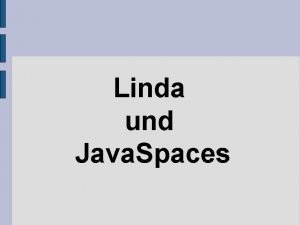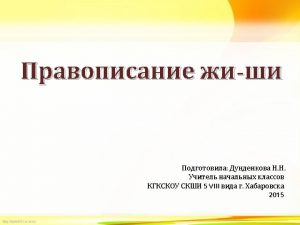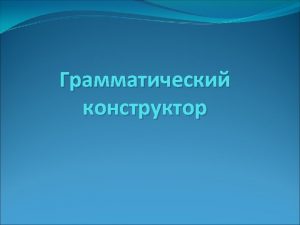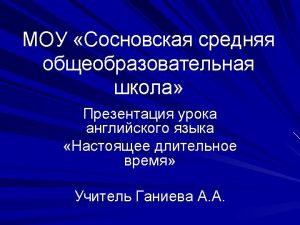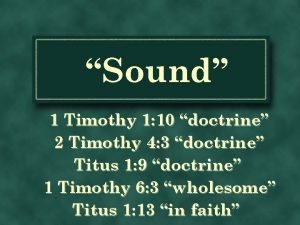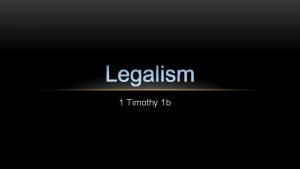Timothy J OLeary Linda I OLeary G N






















































- Slides: 54

Timothy J. O’Leary Linda I. O’Leary G N I T S U L P A I M O ENT SS 199 CE 2000 9 199 2000 Presentations by: Fred Bounds

1 CHAPTER Your Future and Computer Competency

Competencies After reading this chapter, you should be able to : 1. Explain computer competency. 2. Distinguish four types of computers: microcomputer, minicomputer, mainframe and supercomputer. Computing Essentials 1999 - 2000 Chapter 1 3

Competencies 3. Explain the five parts of an information system: people, procedures, software, hardware and data. 4. Distinguish application software from system software. 5. Describe hardware devices for input, processing, storage, output and communications. Computing Essentials 1999 - 2000 Chapter 1 4

Competencies 6. Describe document, worksheet and database files. 7. Explain computer connectivity, the Internet and the Web Computing Essentials 1999 - 2000 Chapter 1 5

Overview • Ten years ago, few people were involved with computers. • Microcomputers are common tools today. • New forms of learning and communicating are developing. • How can microcomputers enhance your life? Computing Essentials 1999 - 2000 Chapter 1 6

End Users and Computer Competency • By gaining computer competency, end users can use microcomputers to improve their productivity and their value in the workplace.

End Users and Computer Competency • Using packaged programs to meet unique information needs – Packaged programs are off-theshelf, ready to use – Needs that are information-related or decision-making related Computing Essentials 1999 - 2000 Chapter 1 8

End Users and Computer Competency • Using packaged programs to meet unique information needs Computing Essentials 1999 - 2000 Chapter 1 9

Four Kinds of Computers • Computers are of four types: microcomputers, minicomputers, mainframes and supercomputers.

Four Kinds of Computers are electronic devices that can follow instructions to accept input, process the input and then produce information. Computing Essentials 1999 - 2000 Chapter 1 11

Four Kinds of Computers • Microcomputers Computing Essentials 1999 - 2000 Chapter 1 12

Four Kinds of Computers • Microcomputers • Minicomputers Computing Essentials 1999 - 2000 Chapter 1 13

Four Kinds of Computers • Microcomputers • Minicomputers • Mainframes Computing Essentials 1999 - 2000 Chapter 1 14

Four Kinds of Computers • Microcomputers • Minicomputers • Mainframes • Supercomputers Computing Essentials 1999 - 2000 Chapter 1 15

Microcomputer • This most widely used computer generally employs a microprocessor, “computer on a chip” and are desktop sized or less • Two main types – Desktop (PC’s & workstations) – Portable (notebooks, subnotebooks, palmtops) Computing Essentials 1999 - 2000 Chapter 1 16

Desktop Computers • Small enough for a desktop, but not easily portable • Personal computers (PC’s) run general purpose software and are employed by a wide spectrum of users Computing Essentials 1999 - 2000 Chapter 1 17

Desktop Computers • Workstations are powerful machines, running more advanced software, for technical, scientific, or dataintensive tasks • These distinctions, however, are blurring Computing Essentials 1999 - 2000 Chapter 1 18

Portable Computers • Easily transported from one place to another Computing Essentials 1999 - 2000 Chapter 1 19

Portable Computers • Four categories – Laptops – Notebooks – Subnotebooks – Personal Digital Assistants (PDA) Computing Essentials 1999 - 2000 Chapter 1 20

Minicomputers • Desk-sized • More processing speed and storage capacity than microcomputers • General data processing needs at small companies • Larger companies use them for specific purposes Computing Essentials 1999 - 2000 Chapter 1 21

Mainframe Computers • Larger machines with special wiring and environmental controls • Faster processing and greater storage than minicomputers • Typical machine in large organizations Computing Essentials 1999 - 2000 Chapter 1 22

Supercomputers • The most powerful of the four categories • Used by very large organizations, particularly for very math-intensive types of tasks Computing Essentials 1999 - 2000 Chapter 1 23

The Five Parts of an Information System • An information system has five parts: people, procedures, software, hardware and data.

The Five Parts of an Information System • People Computing Essentials 1999 - 2000 Chapter 1 25

The Five Parts of an Information System • People • Procedures Computing Essentials 1999 - 2000 Chapter 1 26

The Five Parts of an Information System • People • Procedures • Software Computing Essentials 1999 - 2000 Chapter 1 27

The Five Parts of an Information System • • People Procedures Software Hardware Computing Essentials 1999 - 2000 Chapter 1 28

The Five Parts of an Information System • • • People Procedures Software Hardware Data Computing Essentials 1999 - 2000 Chapter 1 29

Software • Software is of two kinds: system software and application software.

Software • Another name for programs • Instructions telling the computer how to process data • Two major kinds – System software – Application software Computing Essentials 1999 - 2000 Chapter 1 31

System Software • Enables application software to interact with the hardware • “Background” software to manage internal computer resources • Operating system software the most important type Computing Essentials 1999 - 2000 Chapter 1 32

Systems Software Windows 98 Desktop Computing Essentials 1999 - 2000 Chapter 1 33

Application Software • Think of “end-user” software • Two major categories – Packaged - “off the shelf”, pre-written programs – Custom - written for an organization’s specific purpose Computing Essentials 1999 - 2000 Chapter 1 34

Application Software Netscape Communicator browser Computing Essentials 1999 - 2000 Chapter 1 35

Software Computing Essentials 1999 - 2000 Chapter 1 36

Software End User An end user is anyone who uses a microcomputer or has access to larger computers - that’s nearly everyone in today’s workforce. They enter commands and typically interact with Computing Essentials 1999 - 2000 application programs. Chapter 1 37

Software Application Software Programs to create, organize, analyze, present and communicate information. For example, Excel is a spreadsheet application program that is used to analyze data. Computing Essentials 1999 - 2000 Chapter 1 38

Software System Software “Background” programs that coordinate the application software requests with computer hardware. Windows 95 is a widely-used system program. Computing Essentials 1999 - 2000 Chapter 1 39

Software Computer Hardware Devices that accept input, process data, store information, produce output and send communications. For example, a disk drive, keyboard, printer and modem are different types of computer hardware. Computing Essentials 1999 - 2000 Chapter 1 40

Hardware • Microcomputer hardware consists of devices for input, processing, storage, output and communications.

Hardware • Physical equipment • Five categories – Input devices – System unit – Secondary storage – Output devices – Communications devices Computing Essentials 1999 - 2000 Chapter 1 42

Input Devices • Translate data and programs that humans understand to a form comprehensible to the computer • Most common types – Keyboard – Mouse Computing Essentials 1999 - 2000 Chapter 1 43

The System Unit • Container holding primary electronic circuitry • Most important components – Central processing unit (CPU) – Memory, also known as primary storage or random access memory (RAM) Computing Essentials 1999 - 2000 Chapter 1 44

Secondary Storage • For permanent storage of data and programs • Often included within the system unit – Floppy disks - 3 1/2 inch, hold approx. . 400 pages – Hard disks - for storing large amounts – Optical disks - storage using laser technology Computing Essentials 1999 - 2000 Chapter 1 45

Secondary Storage • For permanent storage of data and programs • Often included within the system unit – Floppy disks - 3 1/2 inch, hold approx. . 400 pages – Hard disks - for storing large amounts – Optical disks - storage using laser technology Computing Essentials 1999 - 2000 Chapter 1 46

Output Devices • Equipment that translate data from the CPU to a form humans can understand • Most common forms – Monitors – Printers Computing Essentials 1999 - 2000 Chapter 1 47

Output Devices Computing Essentials 1999 - 2000 Chapter 1 48

Communication Devices • Hardware that sends data and programs from one computer to another • Most common example in the microcomputer world - the modem Computing Essentials 1999 - 2000 Chapter 1 49

Data • Data is contained in files for documents, worksheets and databases.

Data • Used to describe facts about something • Contained in files for documents, worksheets and databases – Document files - usually created by word processors – Worksheet files - electronic spreadsheets – Database files - electronic database management programs Computing Essentials 1999 - 2000 Chapter 1 51

Connectivity and the Internet • Connectivity is the microcomputer’s ability to communicate with other computers and information sources. The Internet is the largest network in the world.

Connectivity and the Internet • The World Wide Web is the multimedia component of the Internet. Computing Essentials 1999 - 2000 Chapter 1 53

Computing Essentials 1999 - 2000 Chapter 1 54
 1 timothy 5 nkjv
1 timothy 5 nkjv 1 timothy chapter 3 summary
1 timothy chapter 3 summary Timothy groth
Timothy groth Fill me lord
Fill me lord 1 timothy 6 15 16
1 timothy 6 15 16 Nathan tinning
Nathan tinning 2 timothy 3:1-4
2 timothy 3:1-4 Qualifications for elders 1 timothy
Qualifications for elders 1 timothy Timothy vaill
Timothy vaill B. timothy walsh
B. timothy walsh Timothy shanahan close reading
Timothy shanahan close reading Christina mackey
Christina mackey Titus 1 16 niv
Titus 1 16 niv Timothy kwan
Timothy kwan Timothy standish
Timothy standish 1 timothy 1:15-17
1 timothy 1:15-17 James 4 8 nkjv
James 4 8 nkjv Timothy weag
Timothy weag Timothy hogan photos
Timothy hogan photos Deuses falsos timothy keller pdf
Deuses falsos timothy keller pdf Theme of 2 timothy
Theme of 2 timothy 1 timothy 1 10
1 timothy 1 10 Timothy g. standish
Timothy g. standish Timothy winters worksheets
Timothy winters worksheets 2 timothy 1:18 kjv
2 timothy 1:18 kjv 2 timothy 1:9 predicts the coming messiah. true false
2 timothy 1:9 predicts the coming messiah. true false 1 timothy 1
1 timothy 1 2 timothy 3:16-17, 4:1-5
2 timothy 3:16-17, 4:1-5 Fuzzy
Fuzzy Timothy p. schmalz
Timothy p. schmalz 2 timothy 2:14-19
2 timothy 2:14-19 Timothy galarnyk
Timothy galarnyk Philippians 2 1-11 nkjv
Philippians 2 1-11 nkjv 1 timothy 6:6-8
1 timothy 6:6-8 Timothy moore md
Timothy moore md 1 tim 4:12
1 tim 4:12 2 timothy 2:14-26
2 timothy 2:14-26 1 timothy 6:3-5
1 timothy 6:3-5 Timothy griffin cambridge
Timothy griffin cambridge Timothy primes
Timothy primes 2 timothy 2:14-17
2 timothy 2:14-17 Timothy winters worksheets
Timothy winters worksheets 1 timothy 4:12 sermon
1 timothy 4:12 sermon 2 timothy 4 3-5
2 timothy 4 3-5 1 timothy 1 niv
1 timothy 1 niv Timothy papandreou
Timothy papandreou 2 timothy 2:15 nasb
2 timothy 2:15 nasb Timothy standish
Timothy standish Timothy ball elementary
Timothy ball elementary 2 timothy introduction
2 timothy introduction 1 timothy 6:11-14
1 timothy 6:11-14 Timothy townsend uf
Timothy townsend uf Timothy francis leary
Timothy francis leary Meaning of 2 timothy 4 6-8
Meaning of 2 timothy 4 6-8 Paul's letter to timothy on leadership
Paul's letter to timothy on leadership

